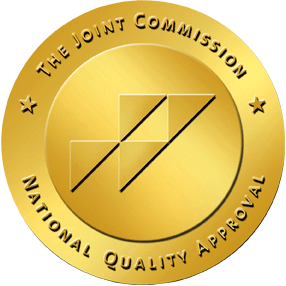Anxiety and depression are two of the most common mental health conditions. In 2023, 31.7% of California adults reported symptoms of anxiety and/or depression, representing a significant portion of the state’s population. Furthermore, more than three-quarters of young adults in CA reported anxiety in the last year, and more than half reported depression.
While these rates continue to climb, the good news is that both depression and anxiety are highly treatable. In fact, the sooner you recognize the signs, the quicker you can access treatment and benefit from it. You do not need to wait until your symptoms interfere with your ability to function to seek help.
Whether you’re experiencing constant worry, persistent sadness, or both, there are proven methods that can help you feel better and regain control of your life. Here at Pura Vida Recovery, we believe in using evidence-based treatments, which are therapies backed by years of research. Below are the top five evidence-based treatments for anxiety and depression, and how they can support you on the path to healing.
1. Cognitive Behavioral Therapy (CBT)
CBT is one of the most widely used and studied therapies for both anxiety and depression. It focuses on helping individuals identify and challenge negative thought patterns, and replace them with more balanced, realistic thinking.
In CBT, you’ll work with your therapist to:
- Identify negative thinking, such as “I’m not good enough” or “Something bad is going to happen.”
- Challenge those thoughts by examining evidence for and against them.
- Replace unhelpful thinking with more realistic and balanced perspectives.
- Develop new behaviors and coping strategies to respond more effectively to stress.
Rather than focusing on the past, CBT is typically present-focused and goal-oriented, making it highly practical for people facing everyday problems. Plus, many therapists assign “homework” between sessions to ensure the skills are being put into action.
2. Dialectical Behavior Therapy (DBT)
Originally developed for borderline personality disorder, DBT is now widely used to treat mood and anxiety disorders. It combines elements of CBT with mindfulness, emotional regulation, and distress tolerance.
Mindfulness is the foundation of DBT. It helps people stay present, increase awareness of their thoughts and behaviors, and observe situations without judgment. Distress tolerance helps people survive crises without turning to harmful behaviors like substance use or self-harm.
Emotion regulation teaches individuals how to understand, label, and manage intense emotions more effectively, while interpersonal effectiveness improves their ability to communicate clearly and maintain healthy boundaries. People with anxiety or depression often struggle in relationships by overreacting or avoiding conflict, so teaching them how to assert themselves in a healthy manner is crucial.
3. Exposure Therapy
A type of CBT, exposure therapy is specifically designed to help people confront and reduce fear and avoidance behaviors. It’s especially effective for anxiety disorders like phobias, panic disorder, and PTSD.
Exposure therapy works by gradually exposing individuals to their fear to help reduce their power over time. For example, if you’re afraid of spiders, your therapist might have you read about spiders, then look at pictures of spiders, and then finally see a real spider up close. This gradual approach builds confidence and resilience and reduces avoidance, which can worsen anxiety in the long-run.
4. Recreation Therapy
Recreation therapy is another evidence-based approach that uses engaging, enjoyable activities to support emotional and mental well-being. It can be a powerful tool for healing, helping people reconnect with themselves, others, and the world around them in a meaningful way. Activities can include anything from art and music to nature walks and yoga. Even sports and team-based games count!
The goal is to choose activities that align with your interests so that you have fun doing them. In addition, you’ll learn effective ways to reduce stress, elevate mood, improve focus, and build coping skills. What makes recreation therapy especially effective for anxiety and depression is that it encourages physical movement, social interaction, and emotional expression—all things that are proven to have a positive impact on mental health.
5. Mindfulness-Based Cognitive Therapy (MBCT)
MBCT combines traditional CBT techniques with mindfulness practices, helping individuals become more aware of their thoughts and feelings without getting caught up in them.
Mindfulness practices include techniques that are designed to help you stay present, focused, and aware without judgment. They can reduce stress, improve emotional regulation, and ease anxiety and depression. Examples include mindful breathing, body scan meditation, mindful walking, and five senses grounding.
When you practice MBCT, you automatically encourage acceptance, reduce rumination, and stay present, even when distress arises. People with recurring depression may even be able to prevent relapse by using mindfulness practices.
Choosing the Right Treatment for You
Every individual’s experience with anxiety and depression is different, which is why personalized care is key. An evidence-based approach doesn’t mean one-size-fits-all. Instead, it means that the treatment you receive is grounded in research and tailored to your unique needs.
At Pura Vida Recovery, we work closely with you to find the right mix of support, structure, and strategy so you can feel more in control, more connected, and more like yourself. With a wide range of evidence-based therapies, you can expect a robust treatment plan that addresses all aspects of your health. Contact us today at (707) 879-8432 to learn more about our services.





